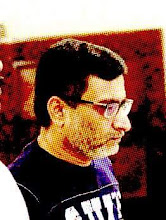Vintage "Comic" Comics

This is an awesome collecton of some of the nicest comics that one would have read and relished as a little kid.
First of all the book is very well put together physically.
* The size simply stuns you!... humongous book
* Stacked with page after...page after..page of full color comics
* Printed in an amazingly thick matt (non-glossy, non-shiny) paper
* Brings out the vividness of the pen/brush art and the true colors
* The soft off-white page color makes them as they appeared in the originals
* The binding is perfect, nice to grab and handle.
* There is enough margin space, and the author/story name is printed along
Other publishers should take a note from this book. The glossy/shiny papers that we have suddenly become fixated with, ruins the art.
This lovely collection includes comics from the 40/50s of
* Unca Scrooge
* Donald Duck
* Dennis the menace
* Little Archie
* Little Lulu
* Pogo
* Fox and Crow
* Captain Marvel
to name a few.
Each character is present in one,two or three stories max, and hence makes a nice mix of all the nice stories.
There are 67 stories in total grouped into five categories,
* Hey, Kids
* Funny Animals
* Fantasyland
* Story Time
* Wacky & Weird
This is a must for the oldtimers who want to get back in time to catch up on some of their best times, and this is awesome for newcomer kids(as well as adults ofcourse) to get introduced to some of the nice stories and comics of a simple, innocent and happy era.
Kudos to the editors and the publisher. we want to see more of these.
You can't go wrong with this one, that too with the steep discounted price!
This is an extract from my review at Amazon.com, You can find more of my reviews here.





















